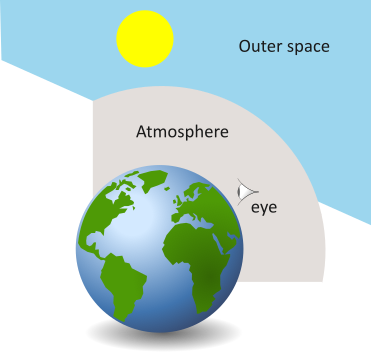Color Theory and Light
GA 91
Lecture One
2 August 1903, Berlin
Theorem: Light seen through dark, appears yellow. Dark seen through light, appears blue. At the boundary between light and dark, colors appear.
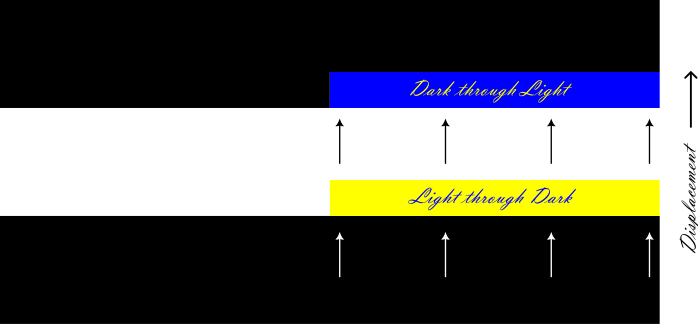
1. If you look at a black circle on a white field through a convex-cut glass, the circle enlarges, and around it you see a yellow border.
Also when the dark spreads into the light, yellow appears.
2. If you magnify a white circle on a dark field through a convex ground glass, you see a blue edge (Figure 2)
3. If you look at a white circle on a black field through a concave-cut glass, you see a reduced circle surrounded by a yellow rim.


4. If you look at a black circle on a white background through a concave cut glass, you see it surrounded by a blue border, because as the white spreads into the dark, blue appears.
White and black are the two poles of light. Yellow and blue are the two poles of color. Green is the mixture of yellow and blue. (Gray is the mixture of white and black.) All other colors are shades.
Color is created by light and dark interacting at their boundaries without mixing. When they mix, white-gray or a hazy color is created.
If one looks at a black circle through a prism, the shape elongates and becomes an ellipse. Two edges are formed, one yellow and one blue; where it is narrow, the yellow edge is formed, where it is wide, the blue edge. In the other case the analogous event happens.
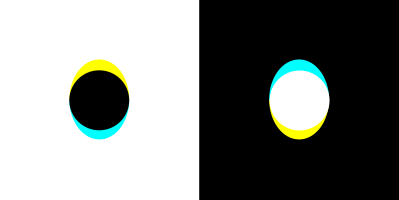

A white stripe, viewed through the prism, is shifted so that on one side light is passed over dark, on the other dark is passed over light; thus in the first case a blue edge stripe is formed, in the second a yellow one is formed.


If I take a wider prism, a red stripe joins the yellow one, and a violet one joins the blue one on the outside.
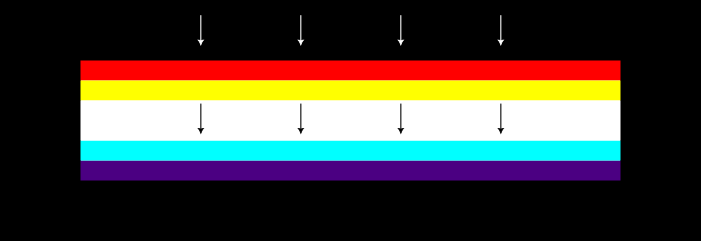
If the prism is still wider, orange still emerges in between on one side and indigo on the other.
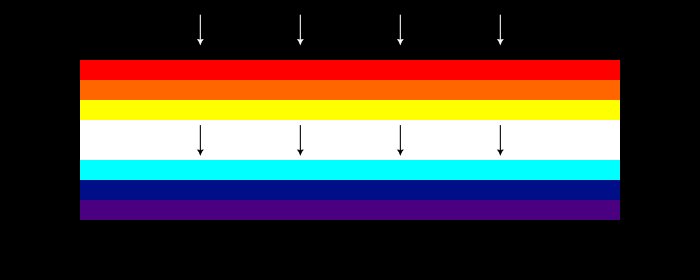
If the prism is of a width such that the two poles of color mix, the result is green.

All colors seen in such a way through a prism are subjective.
Now let's move on to objective colors—in a darkroom.
By letting the rays of light pass through a prism, we deflect the white circle formed on the screen, draw it out, and it acquires colored edges.

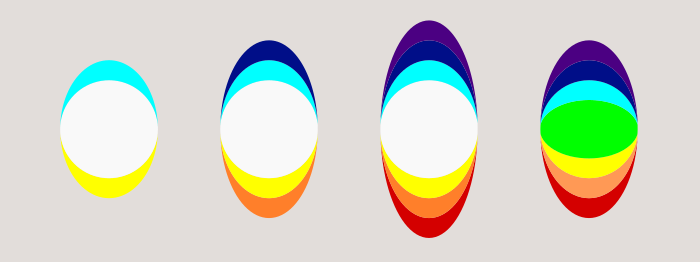
What was seen subjectively earlier emerges precisely in objective colors on the screen.
